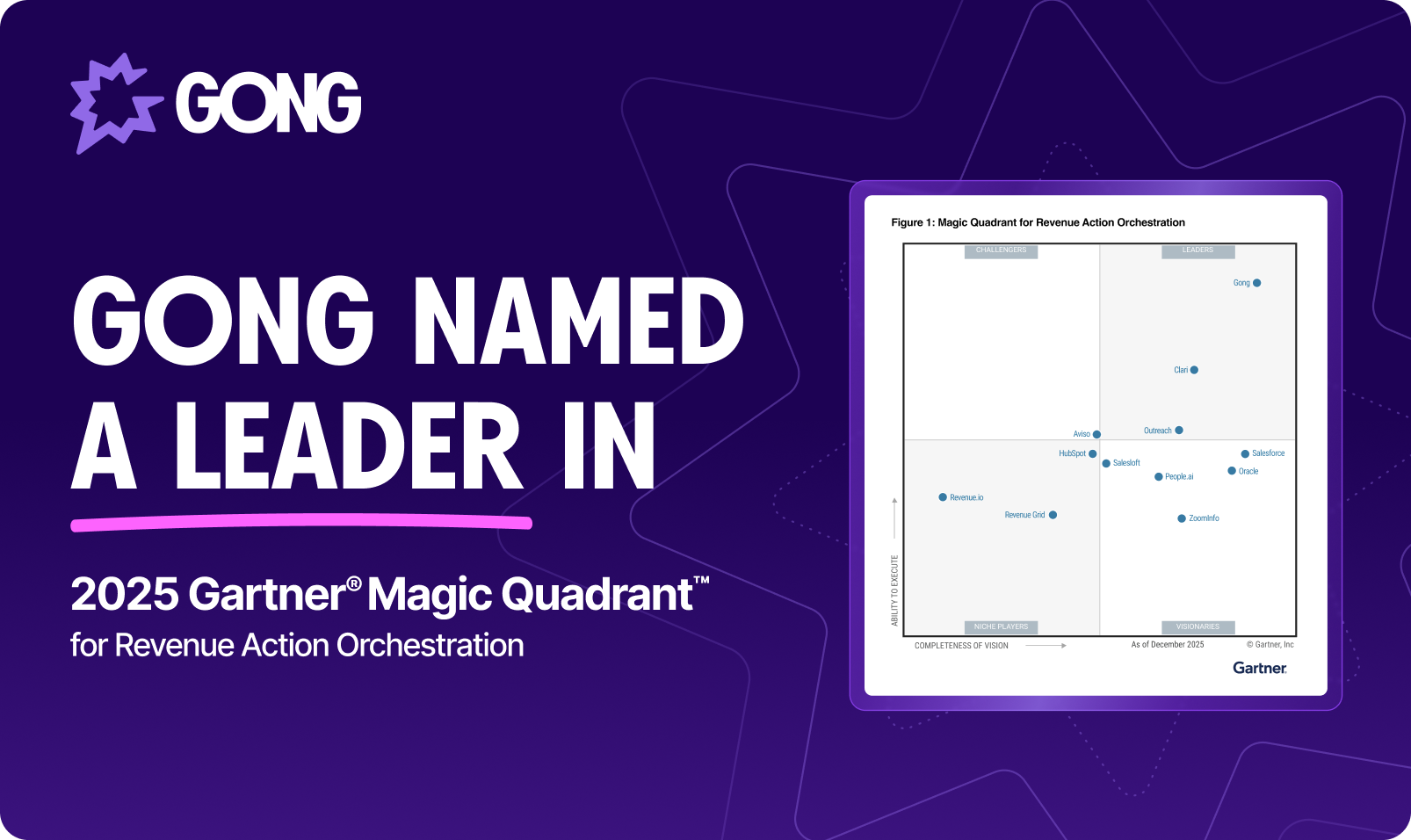Sales engagement
The ultimate guide to social selling

Jonathan Costet
Content Author
Published on: August 8, 2022
58.4% of the world’s population is on social media, with the average time spent on these platforms reaching 2 hours and 27 minutes daily. That’s a big chunk of all your daily attention span spent on social every single day.
So, of course, in 2022, most companies are already on social media pushing their products and services. But this creates an overly crowded market that exhausts potential buyers with product placements, ads, and DMs.
But when done right, social media can still be a great tool in your sales arsenal. It can be a tremendous relationship-building platform that lets your business focus less on old-school prospecting practices like cold calling .
Enter social selling.
Social selling is a process through which salespeople interact with existing and potential customers on social media platforms to build trust, brand loyalty, and close deals.
But what does the social selling process look like? And how can B2B sales reps leverage it on various social platforms? That’s what we’re going to explore in this article.
What is social selling?
Social selling is a process where salespeople can leverage social media channels to reach out and connect with prospects. A successful rep in 2022 needs to build a network of potential buyers and establish credibility and trust with them before they jump on a call (or send a cold email ).
And they can develop relationships with potential leads, engaging them where they feel most comfortable — on social media.

Whereas prospecting is all about targeted sales pitches, social selling takes a different approach. It’s a form of relationship-building meant to attract high-quality prospects to you.
Social selling allows reps to find the right prospects and establish a rapport with them through a customer relationship. Think of it as modern prospecting, meeting the current generation of buyers in a place they feel at ease and engaging with them in a manner they prefer.
Social selling is not a quick “Hi, let’s connect.” message straight into a sales pitch. Keep this in mind as you get started with this process.
Yes, the word “selling” is in the name, but that doesn’t mean you should add new connections and immediately push your new promotion for new customers. There’s nothing social about that.
The key to effective social selling is to put relationship-building first, always.
What’s unique about social selling?
What sets social selling apart is that it leverages digital communication as a means to establish relationships with your potential buyers instead of just trying to sell sell sell.
When done correctly, social selling can take the place of “tried and true” prospecting methods that sales reps and prospects alike dread. What makes it different is that you’re approaching consumers on a platform they feel comfortable on.
But do people actually want to engage with businesses on social media? The answer is a huge resounding yes. In fact, 87% of B2B buyers are open to interacting with salespeople who they met through a professional network like LinkedIn.
Okay, so they’re ready to talk. But do they put their money where their mouth is? Again, the answer is a resounding yes.
Studies have shown that 72% of salespeople using social selling outperform peers who haven’t taken to this new and innovative sales strategy yet.

Convenience is probably a big factor here. Social selling is a more convenient option for most buyers, and outreach doesn’t feel like an abrupt interruption. On the contrary, many actually feel a connection with the businesses they patronize.
That’s the major difference between social selling and social media marketing. It’s a personal experience that creates one-on-one relationships between companies and potential buyers. You’re not plastering impersonal ads or spamming contact requests and pitches and hoping that someone bites. Instead, you’re building trust and credibility over the long term.
So what’s the bottom line? Social media is a legitimate sales platform that generates results for sales teams worldwide.
It’s not just about funny rivalries, jokes, and driving brand awareness. It’s effective for driving sales, too. In 2022, 34% of US buyers want to be contacted by sellers over social networks (vs. 21% who want to get called).
What problems will social selling solve?
There are several sales problems that social selling will help you solve. As salespeople, we always hear that successful selling comes from relationship building. However, most people are wary of sales reps (often with good reason).
For years, we’ve been over-marketed to. Cold calling is a tried-and-true part of the sales process that shouldn’t be ignored or downplayed. However, social selling gives you an opportunity to build your sales pipeline with targeted leads without jumping on the phone with a stranger. By engaging with prospects in the digital space, you can establish relationships in a non-invasive way.
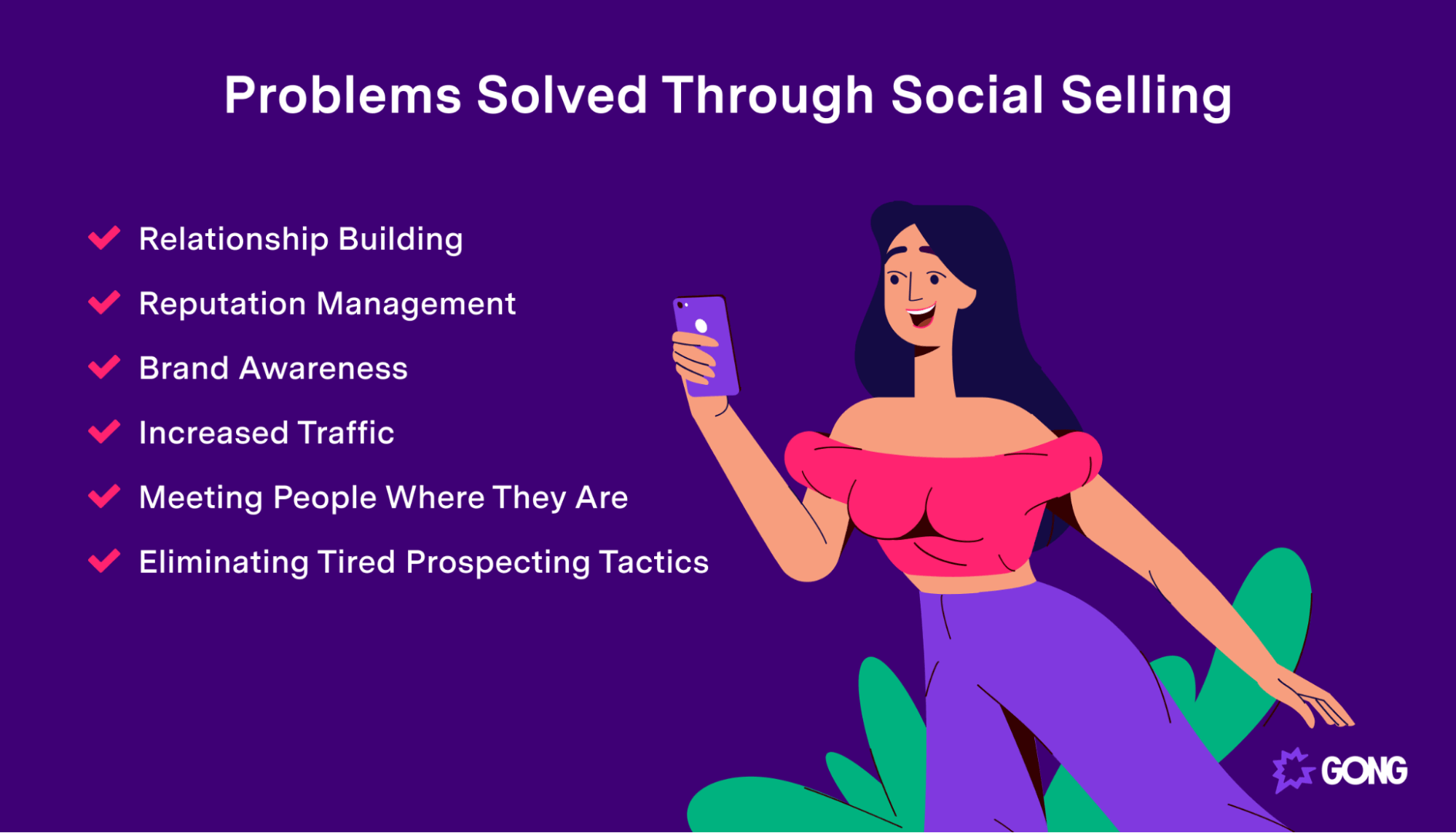
Social selling also helps you define your reputation in a massive online space. There’s a lot of noise in the social media world, but social selling evens the playing field so that anyone can have a platform and build their social network.
By investing time and delivering value up-front, you can establish relationships that will not just lead to deals, but also strengthen your reputation. You may even get a few positive reviews and word-of-mouth referrals along the way. (And we’re sure you know how much these can impact your closing efforts.)
And because you deliver value on your profile, not just randomly spam potential leads, you can even build brand awareness at the same time. A wide range of potential buyers will get an impression of who you are and what you stand for, not just what your company does.
The social selling process exploded in popularity during the Covid lockdowns, as salespeople were scrambling to keep the sales volume up.
How could salespeople create relationships with potential clients when no one was leaving the house?
At one time, networking events were hugely beneficial for relationship building. A handshake, a smile, and a quickly pulled business card could be the deciding factor in closing a deal.
But during the pandemic, there were no such events. So sales reps had to go somewhere else to meet potential buyers.
And this is where social selling came into its own.
Sales professionals started to build relationships into the digital world when they could no longer dress up in suits and swap business cards. The sales world found a new and effective way to sell.
Now, a new business landscape focuses more on socially-distanced experiences and remote work . And smart analytics enable you to track how well you’re adopting this new strategy.
One way you can measure how effectively you’re selling on LinkedIn, for example, is through the social selling index metric. This was developed by LinkedIn back in 2014.
The social selling index metric determines your effectiveness in four major areas:
- Creating a professional brand with a well-managed profile
- Finding the right people
- Sharing content that inspires relevant and potentially profitable conversation
- Building relationships and strengthening them over time
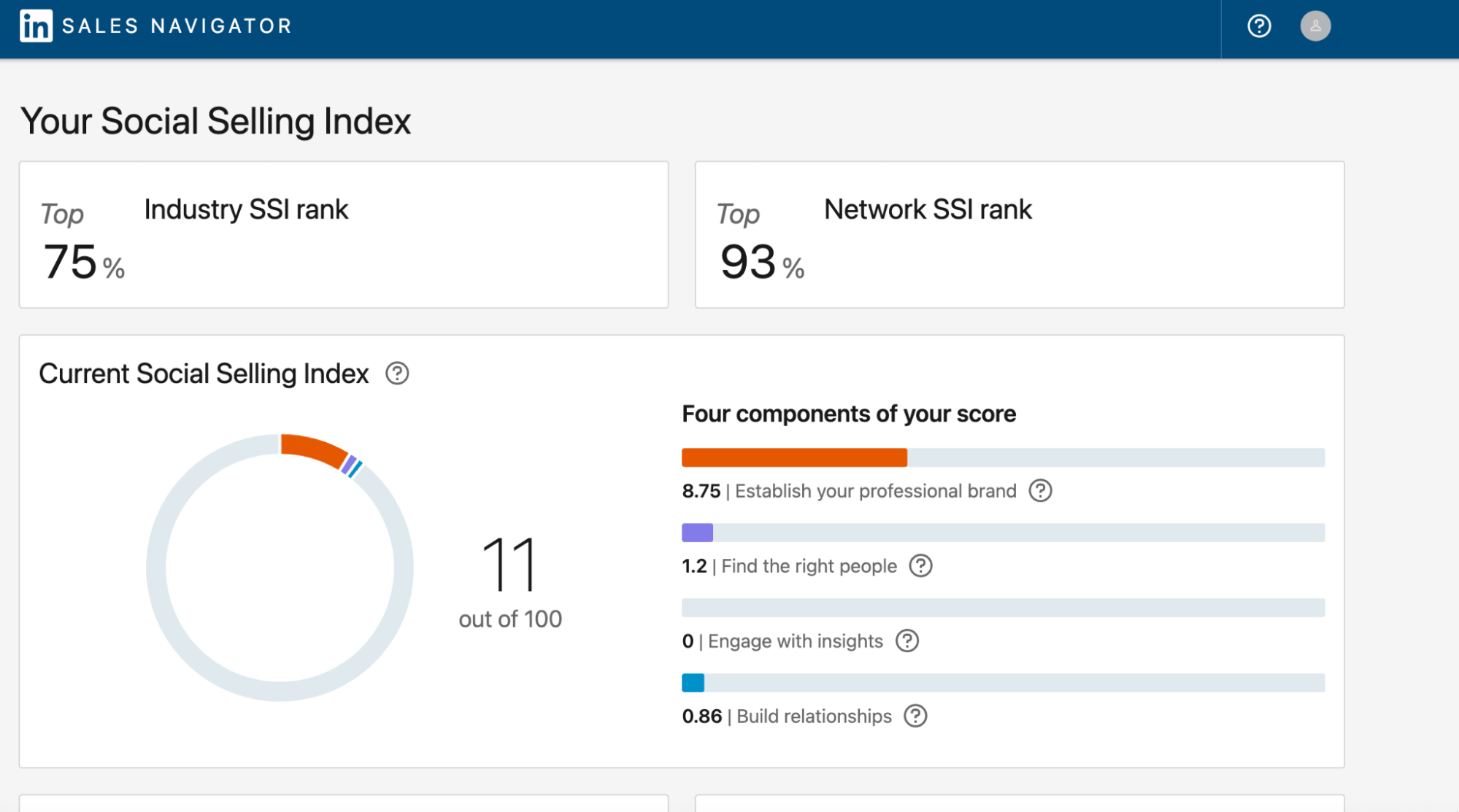
You can find the social selling index dashboard on LinkedIn in the Sales Navigator . In the beginning, it will look something like the image above. But with hard work and meaningful connections, it will grow and fill out.
Is social selling a good fit for your team?
Okay, so we’ve covered facts and figures that back up social selling as a modern sales strategy. But you’re probably still wondering, “will social selling work for my company?”
All businesses are different, so what works for some, obviously may not work for others. That also goes for social selling — a variety of factors determine whether social selling is a strong option for you and your team. Before you start rolling out a social selling strategy, ask yourself a few critical questions.
Are your buyers on social media? If so, which platform?This is probably the most important factor in determining whether social selling will be a successful venture for you. Obviously, if you’re catering to a population that doesn’t use social media platforms (a very small minority today), or doesn’t spend a large amount of time on them, then social selling isn’t going to do much.
If the members of your target demographic are on social media, the next thing you have to ask yourself is what platform they’re on.
Take Gong as an example. We focus on a B2B audience of sales executives, sales managers, and professionals. That means we’re not going to flourish by doing TikTok dances and sharing cat photos on Instagram. Instead, we keep our focus on LinkedIn, and have multiple industry-leading sales experts that their hands-on experience and give advice on the platform. This helps us attract relevant, high-quality inbound leads, and gives us a great foundation for doing sales outreach on the platform.
The number one social selling mistake to avoid
Before we jump into how you can sell in a social way on each platform, let’s cover the biggest misconception (and mistake) when it comes to social selling.
Social selling is not about being a pushy salesperson trying to force interaction and immediately diving into the pitch. It’s not about spamming people.
If you’re on LinkedIn, I’m sure you’ve gotten more than your fair of “Let’s connect.” messages, just for the person toimmediately ask for your money.
That’s not how you sell effectively on social. Instead, it’s about creating meaningful interactions.
Once you establish that relationship, it’s easy to show people that your company can solve their problems.
If you want to succeed, your sales reps need to have a knack for providing value to prospects without being overly sales-oriented (we’ll show an example from one of our own staff members below). It takes patience and belief in the process to blindly focus on providing value through conversation and posts.
Finally, social selling conversations are more about listening than talking. You need to single out sales reps who can listen well and forge strong relationships over time. On social, it’s listening, empathy, patience, and adding value — not close, close, close.
Social selling on LinkedIn
LinkedIn is a social media platform that many people turn to for B2B sales and networking opportunities. A massive 96% of B2B marketers use LinkedIn to run organic marketing campaigns or directly reach out to potential buyers. This environment is why it’s one of the most effective social selling tools out there.
You can’t just jump into contacting people on LinkedIn to start social selling conversations. You need to establish credibility first before taking that step.
How do you establish credibility on LinkedIn? Start by focusing on your profile and establishing your personal voice on social media.
Keep your profile up to date with your photo, role, and bio. Those are the basics.
But here’s the key to success: make sure that the content you’re posting creates value. You don’t want to just be a walking billboard talking about your newest sales promotion and sharing company press releases. relatable anecdotes, helpful advice, and answer common questions in your industry.
And let your personality shine through. your own personal perspective on industry issues and problems. This humanizes you to potential buyers on social media, and makes it easy to start a fruitful business relationship.
Finally, don’t be afraid to take a stand and disagree with “status quo” when it matters to you. 89% of buyers say they are more likely to consider a brand if a seller changes the buyer’s way of thinking. Help them shift their paradigms and they’ll be happy to do business with you.
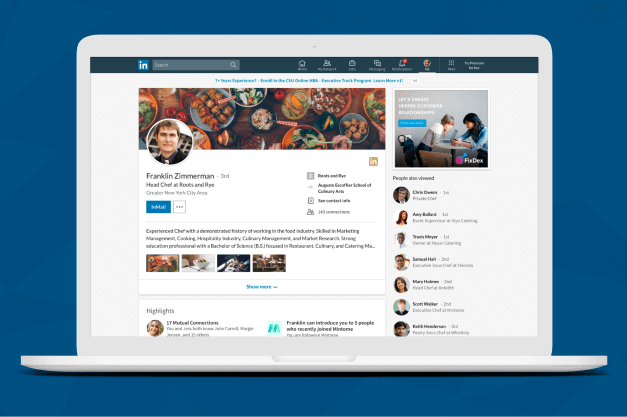
( Image Source )
You can build credibility faster by extending your network. Find mutual connections and join LinkedIn groups to reach more people. Think of LinkedIn as an online networking event, and your page is like a giant business card. Gather endorsements from your LinkedIn connections. These act as letters of recommendation, showing the people who look at your LinkedIn page that you’re a legitimate professional with valued connections throughout the business world.
Once you’ve established your profile, it’s okay to start reaching out. Ask questions and videos that speak to some topic they’ve raised. These are the first steps that can begin the relationship-building process.
You can, of course, connect with strangers and send cold messages, but find a way to deliver value in some way — for example, a recent survey the prospect may be interested in.
But here’s the key to LinkedIn selling success:don’t neglect the connections you’ve already made.Leverage them by staying active and posting valuable advice (related to your product or service) regularly to your LinkedIn feed and acting as conduit for the community.
Here’s an example from our very own director of new product sales, Chris Orlob:
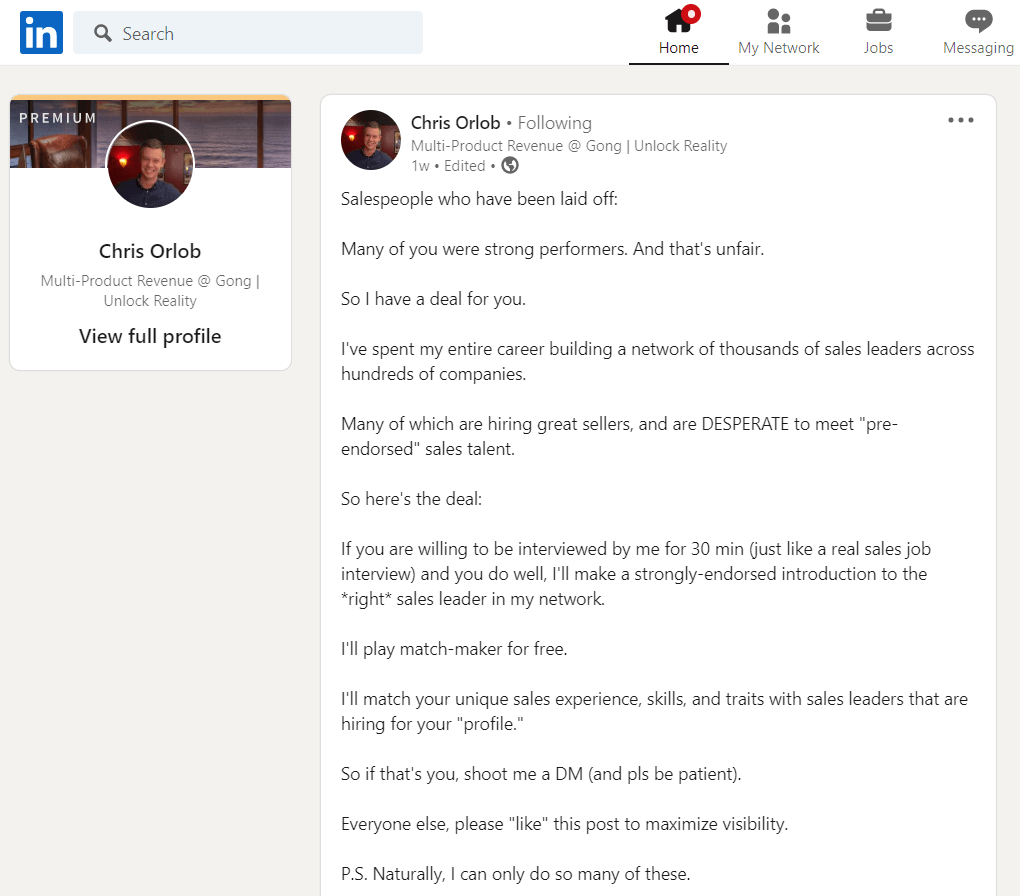
As you can see, our team isn’t all talk when we talk about “adding value.” He’s literally offering out-of-work sales reps a personal introduction that could land them their dream job without a lengthy interview process.
As we mentioned, LinkedIn Sales Navigator can be a great tool for tracking your social selling success. It will also help you locate prospects and reach out to them personally. On top of that, the Sales Navigator dashboard will provide you with analytics that can determine your effectiveness (or that of your reps).
Social selling on Facebook
Facebook is a wildly popular social network with a huge audience that’s even bigger now after acquiring Instagram and WhatsApp through the years.
When talking about Facebook and selling, it’s easy to think of Facebook Marketplace (FB’s Craigslist), but that’s not what social selling is about.
Instead, B2B sales professionals can leverage the power of Facebook groups to network and establish themselves as authorities in their industry. This includes commenting on posts, reaching out directly via messages, and even making your own original posts and sharing them in appropriate groups.
The key is to create valuable, able content that professionals will want to interact with.
Here’s an example from Andrei, one of the members of “Facebook Ads Buyers,” with a quick and dirty breakdown of how he’s managing retargeting campaigns for high-ticket fashion ecommerce.
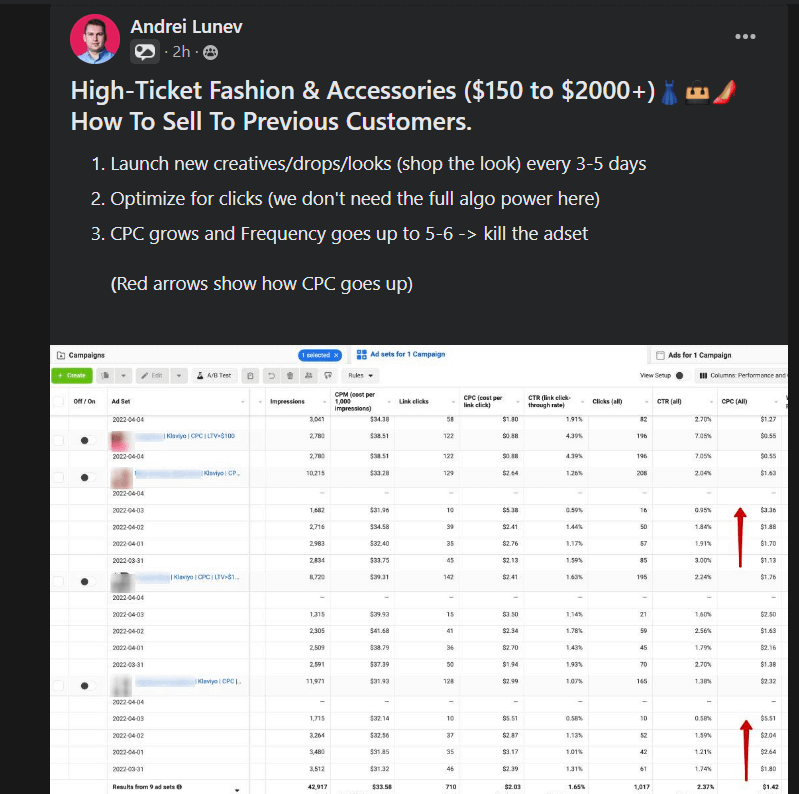
When someone comments or interacts with your content, respond. Ask questions and answer anything they ask. Offer to reach out directly through Messenger or ask them to DM you if they want to have a more in-depth conversation.
If people your content, that boosts your brand awareness and acts as a cosign for you and your brand.
When responding to comments, ensure that you do so in a kind and respectful manner. Being polite and nice can go a long way toward starting a social selling conversation on the right foot.
Social selling on Twitter
Twitter can also be a powerful social selling tool, but you need to go about interactions differently than you would on platforms like Facebook or LinkedIn.
For starters, create Twitter lists that will help you keep track of any information that certain groups are sharing. This can include your existing customers, competitors, and prospects.
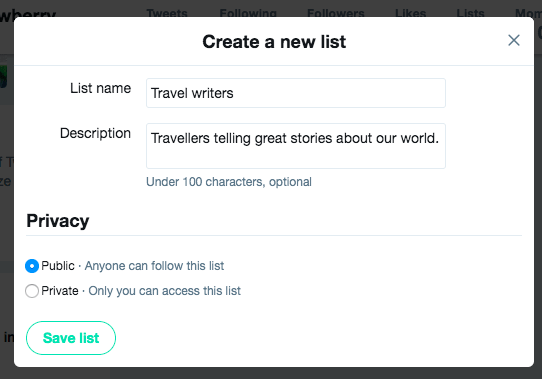
( Image Source )
Make these lists private so that only you can access them.
Once you’ve done that, you’ll be able to analyze how your competitors engage with Twitter users and how those responses are being met. (You can also use paid tools like Buffer to track this.) This can be invaluable information, as you can learn quite a lot from the successes and failures of your greatest rivals.
A social selling plan on Twitter should involve both official Twitter accounts of potential client companies and the personal accounts of the decision-makers within. This will help create relationships with the people who have the power in the company (as the brand account is often run by underpaid interns with no actual power, but a killer sense of humor).
Remember, don’t just jump in and try to sell your product. That’s a good way to get blocked and ruin your personal brand. Instead, watch what they’re tweeting and sharing and look for an opportunity to jump in with your expertise.
One way to do this is to follow them and turn your Twitter notifications on. Then, once you see something you feel you can weigh in on, reply to those tweets in a friendly way to stay relevant in their minds.
Just remember the fundamental rule of social selling — don’t spam, only communicate in constructive ways. So respond to something they post if you have something valuable to add to the conversation. Don’t just go down the line and respond to everything they tweet right away. That’s borderline stalker behavior that will land you Twitter blocks and complaints, not customers and sales.
Social selling examples
Now, let’s look at how social sellers can create these meaningful relationships and establish strong customer relationships in the future.
For these examples, we’ll stick with LinkedIn, as it’s perhaps the most effective social selling channel out there.
Again, when reaching out to a potential customer on LinkedIn, you don’t want to make it sound like a sales message. So don’t jump straight in and introduce yourself and start talking about how your company can help their company generate increased profits.
That’s the easiest way to be marked as spam. Instead, spend some time looking at the prospect’s posts and finding some common ground. Interact with them through an interest they’ve shown. For instance, if you see that the person is a marketing director, there are ways to take that information and spin it into a non-intrusive, non-salesy conversation.
Here’s a sample message that you could send to kick off a social selling relationship.
Hey Bob,Sorry for the random message, but I noticed on your profile that you’re a marketing director for a consumer goods company. I wanted to reach out because I’m involved in a few different Facebook groups where consumer marketing professionals come together to talk shop and their results. I’be happy to add you into the community if you’like! It can be a great networking opportunity.
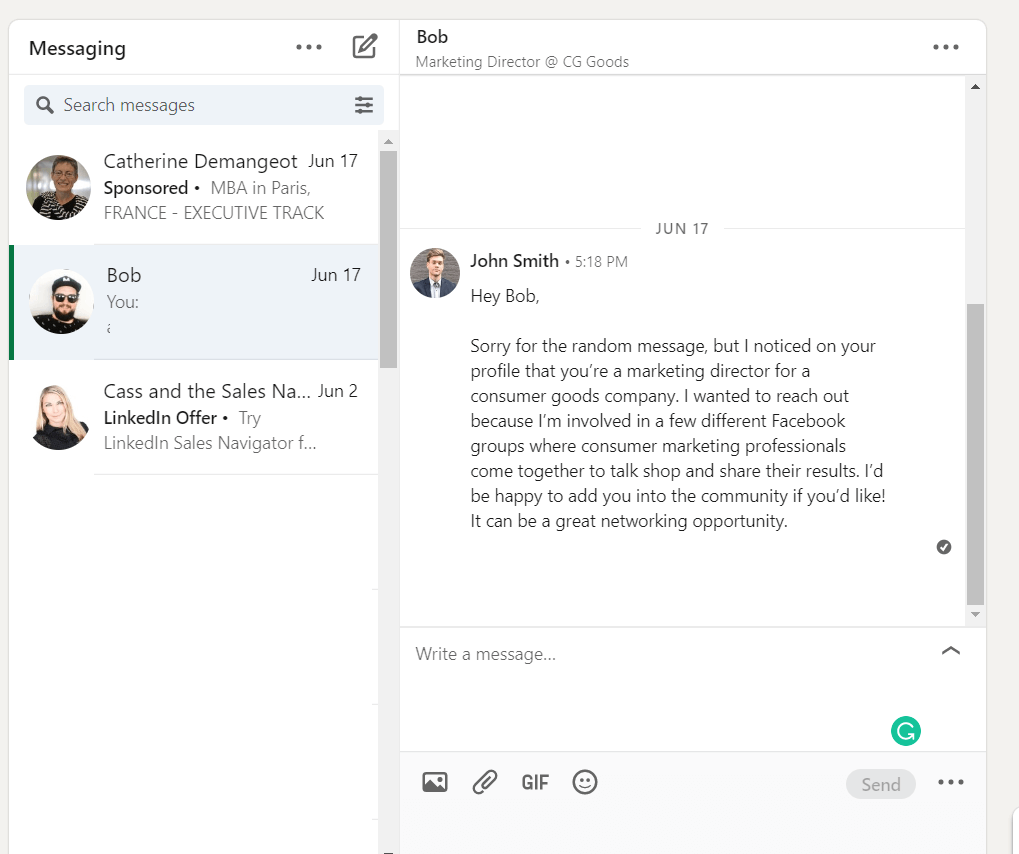
That message was short, sweet, and to the point. There was nothing salesy, and you established value that would benefit the prospect in their professional life.
Another excellent way to establish communication with a prospect through a LinkedIn social selling situation is to some meaningful content that you think would benefit them. This is where having a blog comes in handy. You should be filling your blog with industry-specific content that’s not overly salesy.
Let’s say that you wrote a blog on digital marketing for lawyers, and you see a lawyer connection posting on LinkedIn and talking about the extreme competition they face within their industry.
Here’s a sample message you can send that could establish value and open the doors of communication:
Hey [FIRSTNAME], great to connect with you. Saw your recent post about [X] – totally agree. I had a similar experience recently with [Y] and noticed [Your point of view].OPTIONAL CTA: Just curious, have you ever considered doing [X] differently?
Not only is this conversation polite and to the point, but you’re providing something to the prospect without asking for anything in return. What’s more, you’re asking meaningful questions that could elicit a response and keep the conversation going.
Conclusion
Social selling is the future of the sales industry. By engaging with customers and forging meaningful relationships with them over time, we can develop enhanced customer relationships that stand the test of time. Do it right, and you can get increased brand loyalty and create new business opportunities with stable recurring revenue that’s less likely to churn .
Try out social selling for your company and watch your sales numbers grow. For more insight into the customer-facing conversations that you’re having, check out Gong today .

Content Author
Jonathan Costet is the Senior Director of Revenue Marketing at Wiz. Before this, he was Senior Manager, Growth Marketing at Gong, where he played a crucial role in driving demand generation through data-driven strategies. At Gong, Jonathan harnessed the power of revenue intelligence to craft effective messaging, improve customer retention, and optimize sales forecasting. He was instrumental in using Gong's platform to unlock insights that helped target the right buyers and maximize marketing efficiency.
Discover more from Gong
Check out the latest product information, executive insights, and selling tips and tricks, all on the Gong blog.


